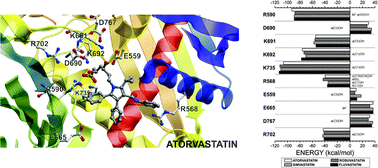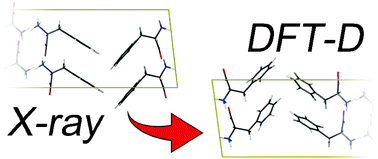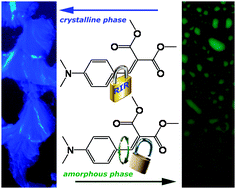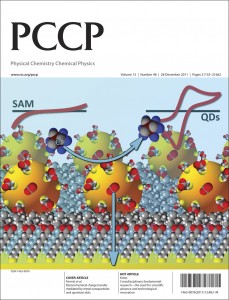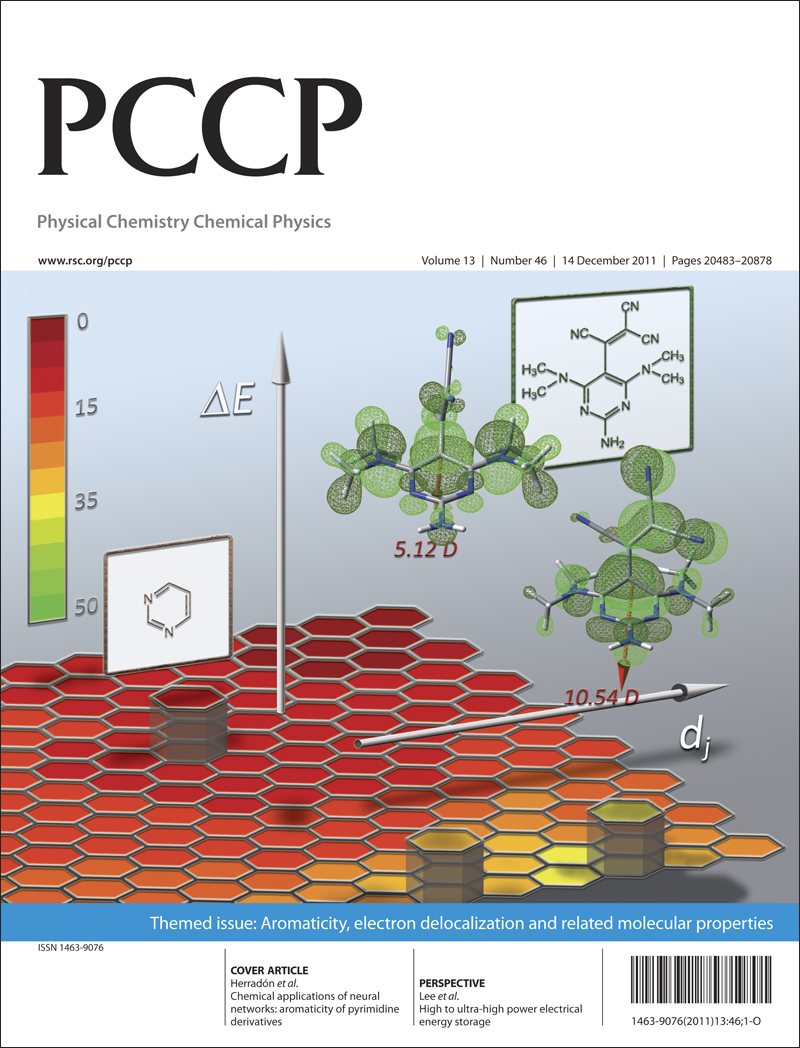This month sees the following articles in PCCP that are in the top ten most accessed in November:
Urine utilisation by microbial fuel cells; energy fuel for the future
Ioannis Ieropoulos, John Greenman and Chris Melhuish
Phys. Chem. Chem. Phys., 2012, 14, 94-98
DOI: 10.1039/C1CP23213D
Physics and chemistry of water and ice
Carlos Vega, Jose Luis F. Abascal and Pablo G. Debenedetti
Phys. Chem. Chem. Phys., 2011, 13, 19660-19662
DOI: 10.1039/C1CP90177J
Do we fully understand what controls chemical selectivity?
Julia Rehbein and Barry K. Carpenter
Phys. Chem. Chem. Phys., 2011, 13, 20906-20922
DOI: 10.1039/C1CP22565K
Nanoconfinement effects in energy storage materials
Maximilian Fichtner
Phys. Chem. Chem. Phys., 2011, 13, 21186-21195
DOI: 10.1039/C1CP22547B
Graphene-based electrochemical energy conversion and storage: fuel cells, supercapacitors and lithium ion batteries
Junbo Hou, Yuyan Shao, Michael W. Ellis, Robert B. Moore and Baolian Yi
Phys. Chem. Chem. Phys., 2011, 13, 15384-15402
DOI: 10.1039/C1CP21915D
Simulating water with rigid non-polarizable models: a general perspective
Carlos Vega and Jose L. F. Abascal
Phys. Chem. Chem. Phys., 2011, 13, 19663-19688
DOI: 10.1039/C1CP22168J
On the nature and signatures of the solvated electron in water
B. Abel, U. Buck, A. L. Sobolewski and W. Domcke
Phys. Chem. Chem. Phys., 2012, 14, 22-34
DOI: 10.1039/C1CP21803D
Glass transition and phase state of organic compounds: dependency on molecular properties and implications for secondary organic aerosols in the atmosphere
Thomas Koop, Johannes Bookhold, Manabu Shiraiwa and Ulrich Pöschl
Phys. Chem. Chem. Phys., 2011, 13, 19238-19255
DOI: 10.1039/C1CP22617G
Perspectives of relativistic quantum chemistry: the negative energy cat smiles
Wenjian Liu
Phys. Chem. Chem. Phys., 2012, 14, 35-48
DOI: 10.1039/C1CP21718F
Density functional theory for transition metals and transition metal chemistry
Christopher J. Cramer and Donald G. Truhlar
Phys. Chem. Chem. Phys., 2009, 11, 10757-10816
DOI: 10.1039/B907148B
Why not take a look at the articles today and blog your thoughts and comments below.
Fancy submitting an article to PCCP? Then why not submit to us today!











